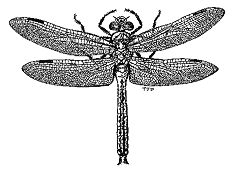Wetland Bioassessment Fact Sheets
|
|
||
| Environmental Protection Agency |
Office of Water Office of Wetlands, Oceans and Watersheds (4502-F) |
EPA843-F-98-001 July 1998 |
|
|
||

By: Thomas J. Danielson
U.S. Environmental Protection Agency
Wetlands Division (4502F)
401 M Street, SW
Washington, DC 20460
Table of Contents
- Acknowledgements
- Assessing Biological Integrity of Surface Waters
- Applications of Biological Assessments in Wetlands
- Biological Assessment of Wetlands Workgroup (BAWWG)
- Wetland Bioassessment Projects
- Developing an Index of Biological Integrity
- Wetland Biological Assessments and HGM Functional Assessment
- Water Quality Standards
- Evaluating Performance of Wetland Restoration
- Involvement of Volunteers in Wetland Monitoring
- Glossary of Bioassessment Terms
Acknowledgments
These fact sheets are an outgrowth of the increasing interest among wetland and water quality professionals to develop sound methods that measure the biological condition of wetlands. I would particularly like to thank Jim Karr (University of Washington) for providing inspiration and many helpful suggestions throughout the development of these fact sheets and to Mark Brinson (East Carolina University) and Dan Smith (U.S. Army Corps of Engineers, Waterways Experiment Station) for writing and reviewing the HGM column in Fact Sheet . I extend my heartfelt gratitude to my colleagues at the U.S. EPA for their comments and support: Doreen Vetter (Wetlands Division), Susan Jackson (Office of Science and Technology), Chris Faulkner (Assessment and Watershed Protection Division), Bill Sipple (Wetlands Division), Matt Witten (Wetlands Division), Brett Melone (Wetlands Division), Connie Mullenex (Wetlands Division), Tom Kelsch (Wetlands Division), and Matt Little (Wetlands Division).
I would also like to thank the members of the Biological Assessment of Wetlands Workgroup (BAWWG) and others for sharing their knowledge and ideas. These fact sheets benefitted greatly from discussions and correspondence with Paul Adamus (Oregon State University), Bill Ainslie (U.S. EPA Region 4), Randy Apfelbeck (MT Department of Environmental Quality), Cici Borth (Montana State University), Rob Brooks (Penn. State University), Naomi Detenbeck (U.S. EPA Duluth Lab), Jeanne DiFranco (ME Department of Environmental Protection), Mike Ell (ND Department of Health), Steve Doherty (University of Florida), Chip Euliss (USGS Northern Prairie Science Center), Siobhan Fennessy (Ohio EPA), Mark Gernes (MN Pollution Control Agency), Mike Gray (Ohio EPA), Glenn Guntenspergen (USGS Northern Prairie Science Center), Judy Helgen (MN Pollution Control Agency), Greg Hellyer (U.S. EPA Region 1), Ryan King (Duke University Wetlands Center), Peter Lowe (USGS Patuxent Wildlife Research Center), Ellen McCarron (FL Department of Environmental Protection), Norman Melvin (NRCS Wetland Science Institute), Steve Pugh (USGS Patuxent Wildlife Research Center), Klaus Richter (King County Resource Lands Section, WA), Dave Ruiter (U.S. EPA Region 8), Don Sparling (USGS Patuxent Wildlife Research Center), Art Spingarn (U.S. EPA Region 3), Jan Stevenson (University of Louisville), Linda Storm (U.S. EPA Region 10), Rich Sumner (U.S. EPA Environmental Research Lab, Corvallis, OR), Billy Teels (NRCS Wetland Science Institute), Ray Thompson (U.S. EPA Region 1), Dennis Whigham (Smithsonian Environmental Research Center), Mike Whited (USGS Northern Prairie Science Center), and Chris Yoder (Ohio EPA). Please forgive me if I ommitted any names from the many people who contributed to the project.
Notice
This document has been subjected to U.S. Environmental Protection Agency peer and administrative review, and it has been approved for publication as an EPA document. Mention of trade names or commercial products does not constitute endorsement or recommendation of use.
Preferred Citation:
Danielson, Thomas J. 1998. Wetland Bioassessment Fact Sheets. EPA843-F-98-001. U.S. Environmental Protection Agency, Office of Wetlands, Oceans, and Watersheds, Wetlands Division, Washington, DC.
![[logo] US EPA](logo_epaseal.gif)